
views
Finding Worms

Wait for a rainy fall day. You can find worms at any time, but it will be easiest when it's just rained. The water drives the worms out of the ground into the open air. They'll head for dry land: sidewalks, roads, driveways, and patios. Look for worms on a humid day before it rains, or during a rain-shower. Try hunting on a cool and moist autumn day or evening. If you are trying to sample worms for a study, fall is the best time to start looking. Most worms are sexually mature by the time fall rolls around, which makes it easier to tell them apart. If it isn't a rainy season, consider watering the ground where you suspect there are worms. Make sure that the earth is thoroughly saturated. Then, wait a few hours and wait for the worms to come out – ideally, in the evening.
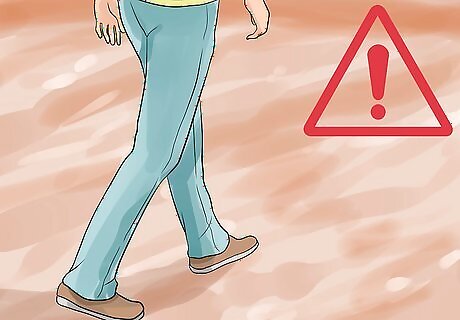
Watch your step. Walk delicately, and try to be patient. Worms can feel the vibration of your footsteps through the soil, and the concussive effect may drive them further underground. If there are a lot of worms out, make sure that you don't accidentally crush them under your feet!
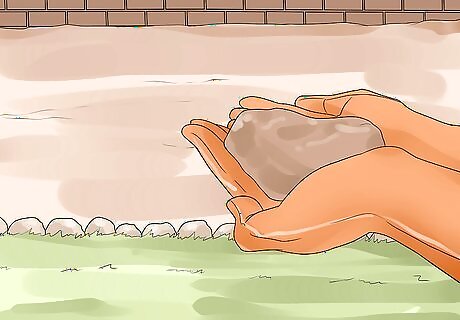
Look on the ground. Check garden soil, fields, pastures, lawns, parks – anywhere with loose soil. Look under rocks, logs, and other objects that create shelter in the soil. Don't be afraid to dig deeper if you suspect that there are worms about. Check your footprints. The pressure from your footstep will often bring curious worms to the surface.
Picking Up Worms
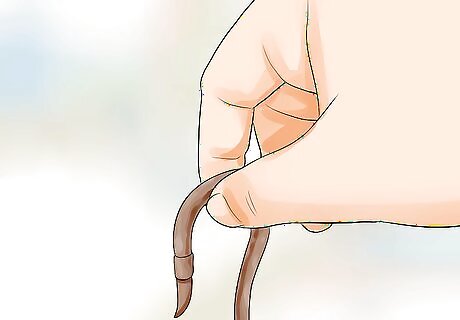
Pick up worms gently. Use your fingers or a pair of long tweezers. If you use your fingers, pinch the worm carefully between your thumb and index finger. Use gloves, if you must, but understand that this will make it a bit harder to get a good grip on the worms.

Don't try to pull worms out of the ground. If a worm is halfway out of its hole, it isn't worth using force. Worms can tense their muscles powerfully at a moment's notice, effectively holding their bodies inside the hole. If you pull too hard, the worm will rip in half before it comes out of the hole. If you're determined, try digging around the worm so that you can pull it out in one piece. Try digging the chunk of hard soil out of the ground, then crumbling it apart until the worm has no place left to hide.
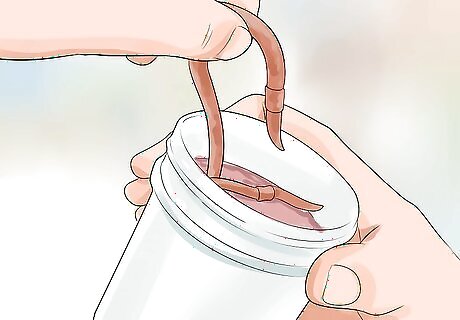
Put the worms into a dirt-filled cup. Fill a cup, bucket, or other open container with a handful of loose, moist soil. Drop each worm into the soil as soon as you pick it up. You don't need a ton of soil – just enough to keep the worms cool and moist.
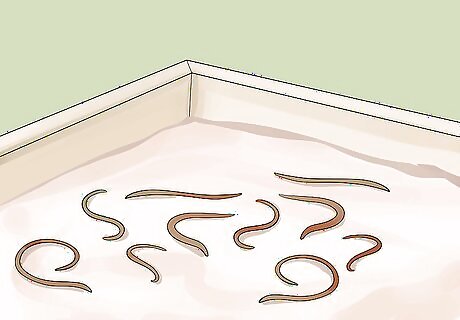
Keep worms alive. The best way to maintain a worm collection is to keep them in a patch of cool, moist soil. Consider building a soil-filled "worm box" or "bait box" to keep the worms in one place. Try keeping worms in your refrigerator: packed in moist soil within a small, sealed container. . Insert tiny holes in the top of the lid for air circulation. Also consider creating (or purchasing a worm farm). Keep worms alive even if you plan to use them as bait. They'll make better bait if you put them on the line fresh. If they're alive, they'll wriggle in the water and attract fish more effectively.




















Comments
0 comment